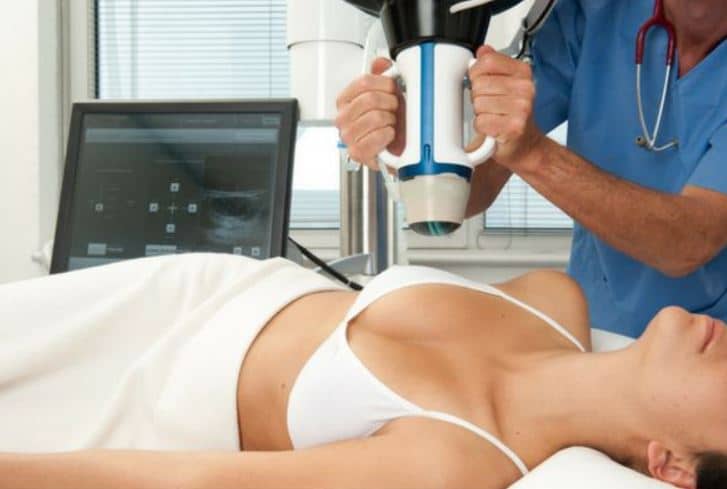Breast lumps are very common, however, there is a wide range of indications that fall under this category. The vast majority of breast lumps are benign (non-cancerous) and do not pose any immediate or serious health concerns.
The different types of breast lumps
A diagnosis of a breast lump often raises fear of breast cancer. However, there is a low chance that a lump is cancerous: In fact, about 80% of breast lumps turn out to be benign (non-cancerous). The most common manifestation of benign breast lumps are fibroadenoma and breast cysts. There are also other conditions such as an abscess, fat necrosis or sclerosing adenosis that can present as a benign lump in the breast tissue.
The difference between a fibroadenom and a cyst
Fibroadenoma are solid and firm nodules which often develop during puberty and thus are most commonly seen in young women. However, they can also develop in later years, even in men, though this happens rarely. The lumps can often be felt as smooth structures which can be easily moved under the skin. Fibroadenoma usually grow to 1-3 cm (0,4 – 1,2 inches). Occasionally they can grow to more than 5 cm (2 inches), bur whatever their size, they are benign and harmless. However, the larger ones can sometimes cause pain, most commonly just before a period.
Breast cysts are also a benign. Nevertheless, they are not the same as a fibroadenoma. Cysts are fluid-filled areas or bags within the breast tissue and can either feel soft or hard. Cysts are more common at a later age compared to fibroadenoma and usually occur between the age of 35 – 50. Often, cysts appear in multiples and can occur in one breast or both.

It’s not fully clear how they develop, even though it is assumed that it’s partly because of natural changes if the breast tissue with age and blocked milk glands. Similar to fibroadenoma, cysts can vary in size and can range between just a few millimeters up to several centimeters. Symptoms tend to be similar, resulting in some discomfort and pain, especially prior to a period when cysts can also become larger and feel sore.
Can fibroadenoma grow?Treatment of fibroadenoma and cysts
In many cases, both fibroadenoma and breast cysts do not require any treatment. Especially when they are not causing any major discomfort, anxiety or pain.
If a cyst is causing pain, the typical treatment is the removal of the fluid with the aid of a small needle. Once the liquid has been removed, the cyst tends to collapse and disappear. In some cases, cysts can refill and will require repeat treatment,
Symptomatic fibroadenoma can be removed by surgery or an excision biopsy, especially if it has become enlarged. Other effective treatments are vacuum assisted biopsy, which uses a syringe and a vacuum to “suck” the fibroadenoma out of the tissue. Echotherapy which is a non-invasive treatment using ultrasound.
Sometimes fibroadenoma can have a cystic part, in this case doctors might speak about a mixed nodule.
